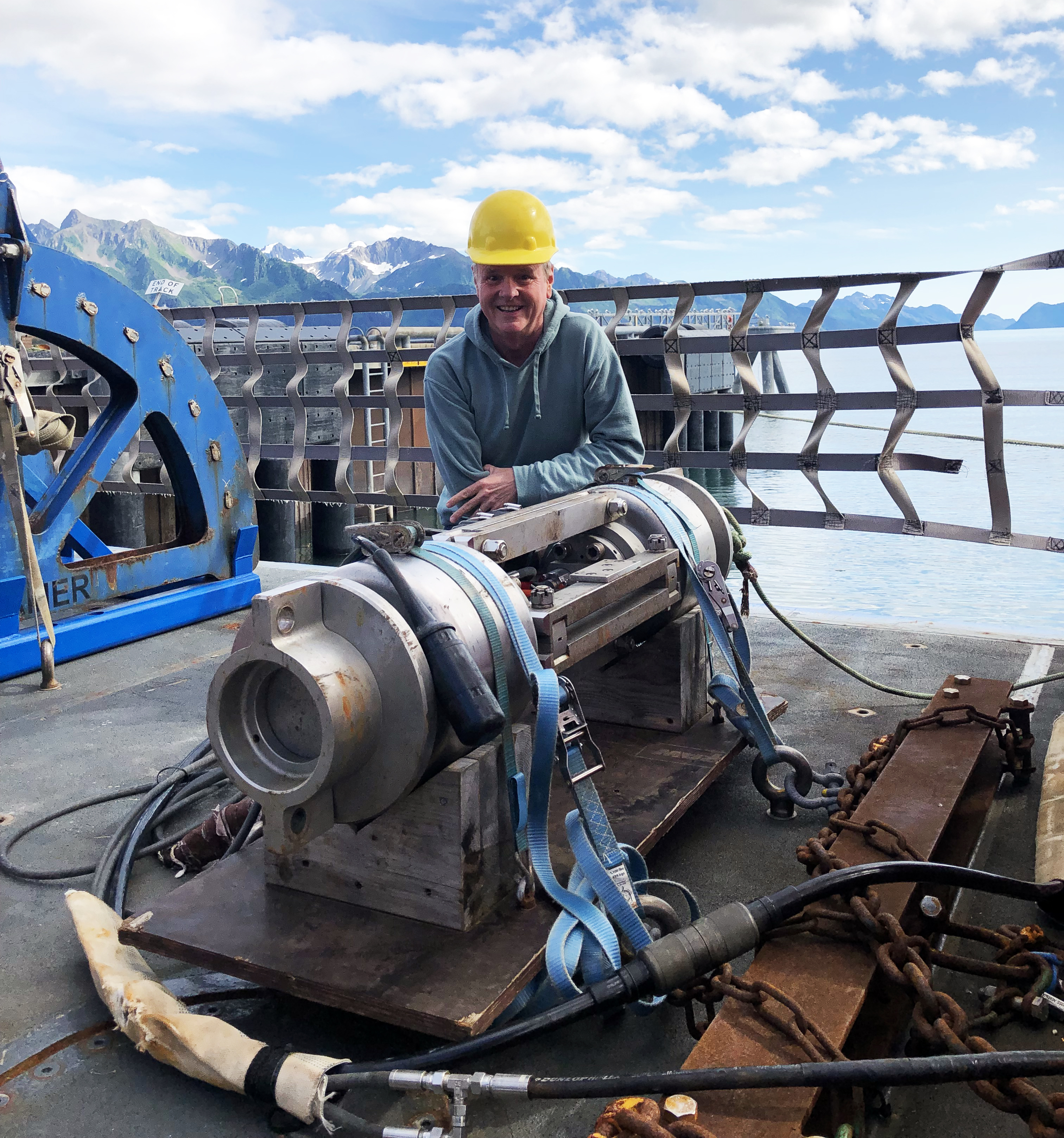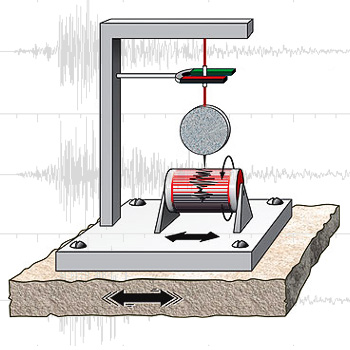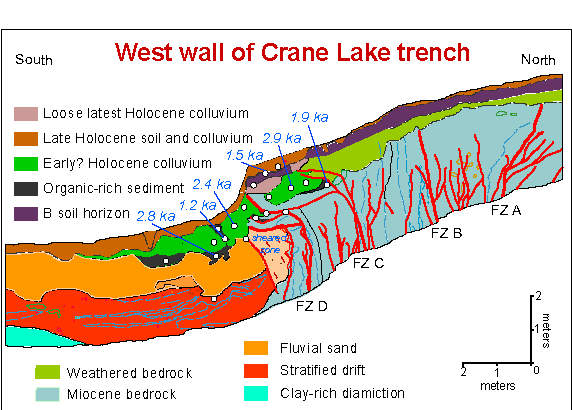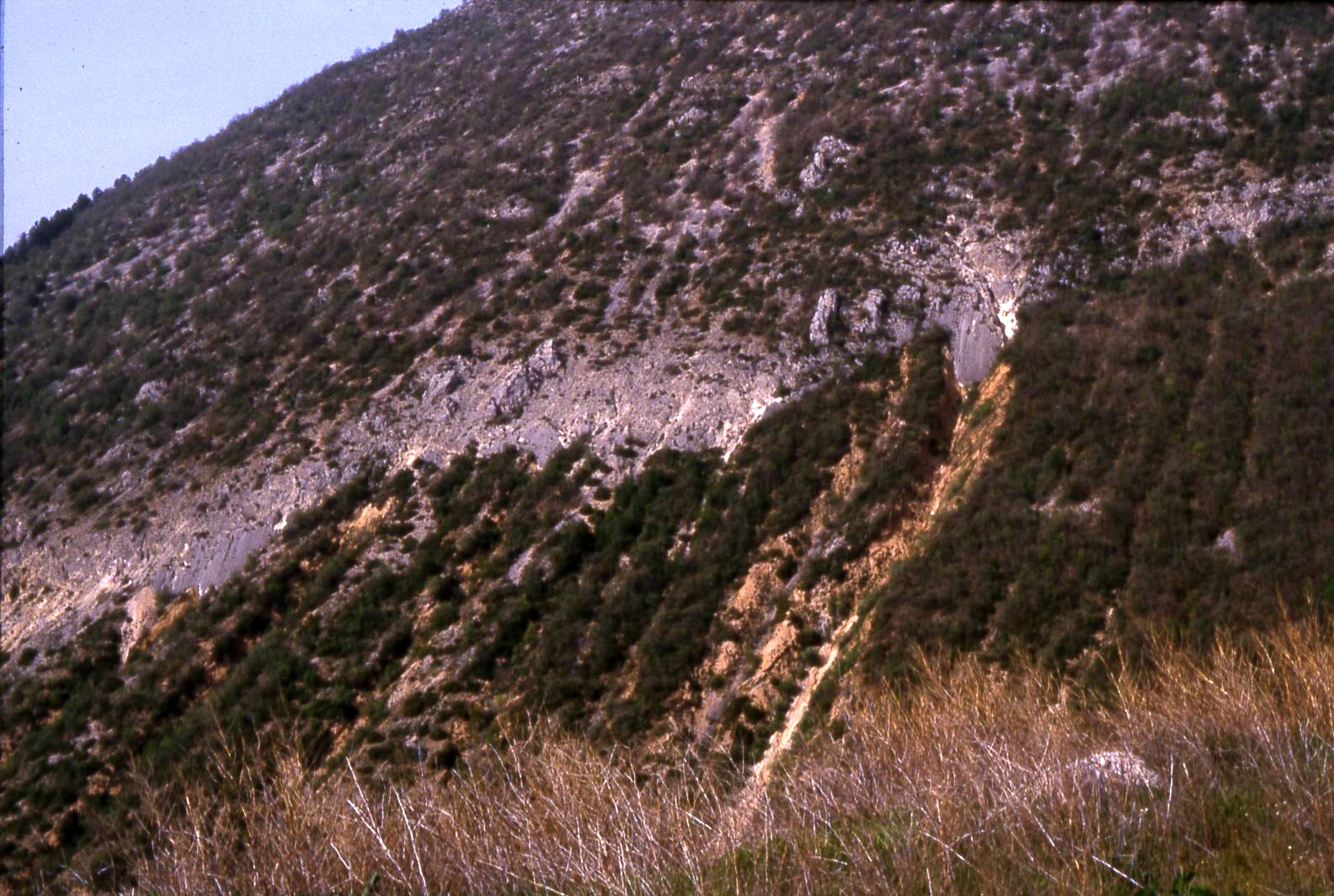|
Seismic
Seismology (; from Ancient Greek σεισμός (''seismós'') meaning "earthquake" and -λογία (''-logía'') meaning "study of") is the scientific study of earthquakes and the propagation of elastic waves through the Earth or through other planet-like bodies. It also includes studies of earthquake environmental effects such as tsunamis as well as diverse seismic sources such as volcanic, tectonic, glacial, fluvial, oceanic, atmospheric, and artificial processes such as explosions. A related field that uses geology to infer information regarding past earthquakes is paleoseismology. A recording of Earth motion as a function of time is called a seismogram. A seismologist is a scientist who does research in seismology. History Scholarly interest in earthquakes can be traced back to antiquity. Early speculations on the natural causes of earthquakes were included in the writings of Thales of Miletus (c. 585 BCE), Anaximenes of Miletus (c. 550 BCE), Aristotle (c. 340 BCE), and ... [...More Info...] [...Related Items...] OR: [Wikipedia] [Google] [Baidu] |
Earthquake
An earthquake (also known as a quake, tremor or temblor) is the shaking of the surface of the Earth resulting from a sudden release of energy in the Earth's lithosphere that creates seismic waves. Earthquakes can range in intensity, from those that are so weak that they cannot be felt, to those violent enough to propel objects and people into the air, damage critical infrastructure, and wreak destruction across entire cities. The seismic activity of an area is the frequency, type, and size of earthquakes experienced over a particular time period. The seismicity at a particular location in the Earth is the average rate of seismic energy release per unit volume. The word ''tremor'' is also used for Episodic tremor and slip, non-earthquake seismic rumbling. At the Earth's surface, earthquakes manifest themselves by shaking and displacing or disrupting the ground. When the epicenter of a large earthquake is located offshore, the seabed may be displaced sufficiently to cause ... [...More Info...] [...Related Items...] OR: [Wikipedia] [Google] [Baidu] |
Seismic Source
A seismic source is a device that generates controlled seismic energy used to perform both reflection and refraction seismic surveys. A seismic source can be simple, such as dynamite, or it can use more sophisticated technology, such as a specialized air gun. Seismic sources can provide single pulses or continuous sweeps of energy, generating seismic waves, which travel through a medium such as water or layers of rocks. Some of the waves then reflect and refract and are recorded by receivers, such as geophones or hydrophones. Seismic sources may be used to investigate shallow subsoil structure, for engineering site characterization, or to study deeper structures, either in the search for petroleum and mineral deposits, or to map subsurface faults or for other scientific investigations. The returning signals from the sources are detected by seismic sensors ( geophones or hydrophones) in known locations relative to the position of the source. The recorded signals are then ... [...More Info...] [...Related Items...] OR: [Wikipedia] [Google] [Baidu] |
Fluvial Seismology
Fluvial seismology is the application of seismological methods to understand river processes, such as discharge, erosion, and streambed evolution. Flowing water and the movement of sediments along the streambed generate elastic (seismic) waves that propagate into the surrounding Earth materials. Seismometers can record these signals, which can be analyzed to illuminate different fluvial processes such as turbulent water flow and bedload transport. Seismic methods have been used to observe discharge values that range from single-digits up through tens of thousands of cubic feet per second (cfs). An experiment in 1990 in the Italian Alps was one of the earliest to demonstrate that seismometers could detect discernible fluvial signals within the seismic noise generated by flow. Six seismometers recorded average velocity of ground oscillations along an alpine river that was also monitored for discharge and bedload with a sediment trap. They determined the lowest flow values require ... [...More Info...] [...Related Items...] OR: [Wikipedia] [Google] [Baidu] |
Seismoscope
A seismometer is an instrument that responds to ground noises and shaking such as caused by earthquakes, volcanic eruptions, and explosions. They are usually combined with a timing device and a recording device to form a seismograph. The output of such a device—formerly recorded on paper (see picture) or film, now recorded and processed digitally—is a seismogram. Such data is used to locate and characterize earthquakes, and to study the Earth's internal structure. Basic principles A simple seismometer, sensitive to up-down motions of the Earth, is like a weight hanging from a spring, both suspended from a frame that moves along with any motion detected. The relative motion between the weight (called the mass) and the frame provides a measurement of the vertical ground motion. A rotating drum is attached to the frame and a pen is attached to the weight, thus recording any ground motion in a seismogram. Any movement from the ground moves the frame. The mass tends not t ... [...More Info...] [...Related Items...] OR: [Wikipedia] [Google] [Baidu] |
Seismometer
A seismometer is an instrument that responds to ground noises and shaking such as caused by earthquakes, volcanic eruptions, and explosions. They are usually combined with a timing device and a recording device to form a seismograph. The output of such a device—formerly recorded on paper (see picture) or film, now recorded and processed digitally—is a seismogram. Such data is used to locate and characterize earthquakes, and to study the Earth's internal structure. Basic principles A simple seismometer, sensitive to up-down motions of the Earth, is like a weight hanging from a spring, both suspended from a frame that moves along with any motion detected. The relative motion between the weight (called the mass) and the frame provides a measurement of the vertical ground motion. A rotating drum is attached to the frame and a pen is attached to the weight, thus recording any ground motion in a seismogram. Any movement from the ground moves the frame. The mass tends not ... [...More Info...] [...Related Items...] OR: [Wikipedia] [Google] [Baidu] |
Tsunamis
A tsunami ( ; from ja, 津波, lit=harbour wave, ) is a series of waves in a water body caused by the displacement of a large volume of water, generally in an ocean or a large lake. Earthquakes, volcanic eruptions and other underwater explosions (including detonations, landslides, glacier calvings, meteorite impacts and other disturbances) above or below water all have the potential to generate a tsunami. Unlike normal ocean waves, which are generated by wind, or tides, which are in turn generated by the gravitational pull of the Moon and the Sun, a tsunami is generated by the displacement of water from a large event. Tsunami waves do not resemble normal undersea currents or sea waves because their wavelength is far longer. Rather than appearing as a breaking wave, a tsunami may instead initially resemble a rapidly rising tide. For this reason, it is often referred to as a tidal wave, although this usage is not favoured by the scientific community because it might gi ... [...More Info...] [...Related Items...] OR: [Wikipedia] [Google] [Baidu] |
Seismogram
A seismogram is a graph output by a seismograph. It is a record of the ground motion at a measuring station as a function of time. Seismograms typically record motions in three cartesian axes (x, y, and z), with the z axis perpendicular to the Earth's surface and the x- and y- axes parallel to the surface. The energy measured in a seismogram may result from an earthquake or from some other source, such as an explosion. Seismograms can record many things, and record many little waves, called microseisms. These tiny microseisms can be caused by heavy traffic near the seismograph, waves hitting a beach, the wind, and any number of other ordinary things that cause some shaking of the seismograph. Historically, seismograms were recorded on paper attached to rotating drums, a kind of chart recorder. Some used pens on ordinary paper, while others used light beams to expose photosensitive paper. Today, practically all seismograms are recorded digitally to make analysis by computer eas ... [...More Info...] [...Related Items...] OR: [Wikipedia] [Google] [Baidu] |
Geology
Geology () is a branch of natural science concerned with Earth and other astronomical objects, the features or rocks of which it is composed, and the processes by which they change over time. Modern geology significantly overlaps all other Earth sciences, including hydrology, and so is treated as one major aspect of integrated Earth system science and planetary science. Geology describes the structure of the Earth on and beneath its surface, and the processes that have shaped that structure. It also provides tools to determine the relative and absolute ages of rocks found in a given location, and also to describe the histories of those rocks. By combining these tools, geologists are able to chronicle the geological history of the Earth as a whole, and also to demonstrate the age of the Earth. Geology provides the primary evidence for plate tectonics, the evolutionary history of life, and the Earth's past climates. Geologists broadly study the properties and processes of ... [...More Info...] [...Related Items...] OR: [Wikipedia] [Google] [Baidu] |
Paleoseismology
Paleoseismology looks at geologic sediments and rocks, for signs of ancient earthquakes. It is used to supplement seismic monitoring, for the calculation of seismic hazard. Paleoseismology is usually restricted to geologic regimes that have undergone continuous sediment creation for the last few thousand years, such as swamps, lakes, river beds and shorelines. In this typical example, a trench is dug in an active sedimentation regime. Evidence of thrust faulting can be seen in the walls of the trench. It becomes a matter of deducting the relative age of each fault, by cross-cutting patterns. The faults can be dated in absolute terms, if there is dateable carbon, or human artifacts. Many notable discoveries have been made using the techniques of paleoseismology. For example, there is a common misconception that having many smaller earthquakes can somehow 'relieve' a major fault such as the San Andreas Fault, and reduce the chance of a major earthquake. It is now known ( ... [...More Info...] [...Related Items...] OR: [Wikipedia] [Google] [Baidu] |
Earthquake Environmental Effects
Earthquake environmental effects are the effects caused by an earthquake, including surface Fault (geology), faulting, tsunamis, soil liquefactions, ground resonance, landslides and ground failure, either directly linked to the earthquake source or provoked by the ground shaking. These are common features produced both in the near and far fields, routinely recorded and surveyed in recent events, very often remembered in historical accounts and preserved in the stratigraphic record (paleo earthquakes). Both surface deformation and faulting and shaking-related geological effects (e.g., soil liquefaction, landslides) not only leave permanent imprints in the environment, but also dramatically affect human structures. Moreover, underwater fault ruptures and seismically-triggered landslides can generate tsunami waves. EEE represent a significant source of hazard, especially (but not exclusively) during large earthquakes. This was observed for example during more or less catastrophic seis ... [...More Info...] [...Related Items...] OR: [Wikipedia] [Google] [Baidu] |
1755 Lisbon Earthquake
The 1755 Lisbon earthquake, also known as the Great Lisbon earthquake, impacted Portugal, the Iberian Peninsula, and Northwest Africa on the morning of Saturday, 1 November, Feast of All Saints, at around 09:40 local time. In combination with subsequent fires and a tsunami, the earthquake almost completely destroyed Lisbon and adjoining areas. Seismologists estimate the Lisbon earthquake had a magnitude of 7.7 or greater on the moment magnitude scale, with its epicenter in the Atlantic Ocean about west-southwest of Cape St. Vincent and about southwest of Lisbon. Chronologically, it was the third known large scale earthquake to hit the city (following those of 1321 and 1531). Estimates place the death toll in Lisbon at between 12,000 and 50,000 people, making it one of the deadliest earthquakes in history. The earthquake accentuated political tensions in Portugal and profoundly disrupted the Portuguese Empire. The event was widely discussed and dwelt upon by European ... [...More Info...] [...Related Items...] OR: [Wikipedia] [Google] [Baidu] |









